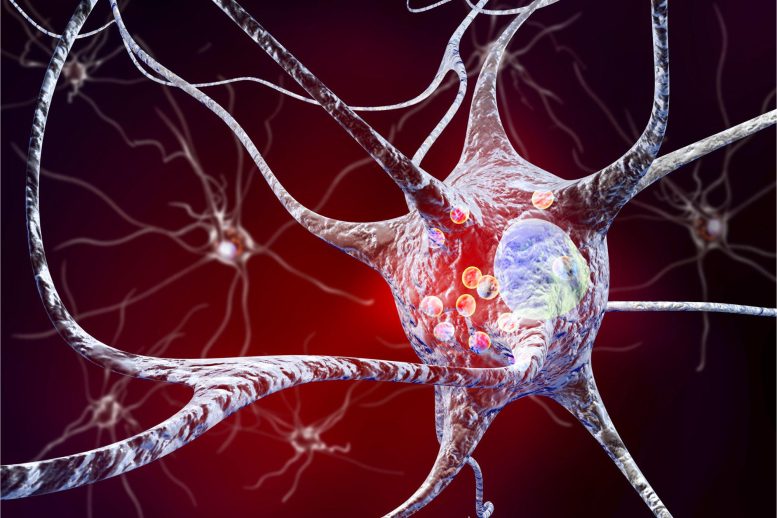
Researchers have discovered that Lewy body disease can be identified before symptom onset through a spinal fluid test. This breakthrough, based on a study involving over 1,100 individuals, revealed that nearly 10 percent had Lewy bodies in their brains, highlighting the possibility of early detection and the potential for timely therapeutic intervention.
Lewy body disease ranks as the second most prevalent neurodegenerative disorder, following Alzheimer’s disease. A team of researchers from Lund University has now determined that the disease can be identified prior to the onset of symptoms through a spinal fluid test. The studies are published in Nature Medicine, where the researchers also demonstrate that a reduced sense of smell is strongly linked to Lewy body disease even before other clear symptoms have developed. The findings are also reported simultaneously at the Alzheimer’s Association International Conference.
The term Lewy body disease encompasses both Parkinson’s disease and Lewy body dementia. The disease is referred to as Parkinson’s disease when issues with movement are more prominent, while the term Lewy body dementia is employed when cognitive decline takes precedence.
”Lewy body disease is caused by the misfolding of the alpha-synuclein protein in the brain. When this happens, the protein clumps together and forms what are called Lewy bodies, which damage the nerve cells,” says Oskar Hansson, Professor of Neurology at Lund University and senior consultant at Skåne University Hospital.
Until very recently, it was not possible to determine with certainty, whether a person with movement difficulties or cognitive impairments had Lewy bodies in the brain until after their death. But now, with a spinal fluid test, it is possible to see if the person has the misfolded protein. Oskar Hansson’s research group has just completed a large study involving over 1,100 individuals, none of whom initially showed any cognitive impairments or motor difficulties. However, it turned out that nearly ten percent had Lewy bodies in their brains according to the spinal fluid test. Therefore, it is possible to detect Lewy body disease even before the first symptoms appear.
”Despite the participants not having any cognitive or neurological problems at the beginning of the study, we observed that those with Lewy bodies in the brain subsequently experienced a decline in their cognitive functions over time. They were also the ones who developed Parkinson’s disease or Lewy body dementia in the coming years,” says Oskar Hansson.
An interesting finding was also that Lewy bodies are strongly associated with a reduced sense of smell even before other symptoms have developed. The sense of smell also deteriorates as the disease progresses. The correlation is so clear that it could be justified to screen individuals over 60 years of age with a smell test and then proceed with testing spinal fluid if one wants to detect Lewy body disease early, according to Oskar Hansson.
”Several drugs targeted at Lewy bodies are currently being developed, with the hope of slowing down the disease. Most likely, this type of medication has the best chance of being effective if administered early in the course of the disease. If symptom-free individuals with reduced sense of smell were identified, and the test for Lewy bodies was positive, they could participate in drug trials aimed at developing new medications that can halt the disease early,” says Oskar Hansson.
However, Oskar Hansson emphasizes that there are many causes of loss of smell that are not related to Lewy body dementia, which is why testing with the spinal fluid test is important.
Brain changes that interact
In a second publication, the research group also studied over 800 individuals with cognitive difficulties and found that around one-fourth of them had a test result indicative of Lewy body disease. Approximately 50 percent of those with Lewy body disease also had an accumulation of the proteins amyloid and tau, which are associated with Alzheimer’s disease. For individuals who had both amyloid and tau, as well as Lewy bodies, the disease progressed faster. This suggests that these brain changes interact, which is of great clinical importance for predicting the patient’s prognosis.
”I believe that this test for Lewy body disease will start being used relatively soon to improve the diagnostic and prognostic work-up in clinics that take care of individuals with movement disorders and cognitive symptoms,” says Oskar Hansson.
Oskar Hansson hopes that, just like for Alzheimer’s disease, it will be possible to develop a blood test for Lewy body disease. One of the challenges with this is that the concentration of proteins originating from the brain is often 100-1000 times lower in the blood than in the spinal fluid, which can make it difficult to detect Lewy body changes.
“On the other hand – five years ago we hardly believed it would happen for Alzheimer’s disease, and now it’s a reality. So, we are investing a lot in refining the methodology, and I am optimistic about the future,” he concludes.
References: “Clinical effects of Lewy body pathology in cognitively impaired individuals” by Corinne Quadalti, Sebastian Palmqvist, Sara Hall, Marcello Rossi, Angela Mammana, Shorena Janelidze, Sofia Dellavalle, Niklas Mattsson-Carlgren, Simone Baiardi, Erik Stomrud, Oskar Hansson and Piero Parchi, 18 July 2023, Nature Medicine.
DOI: 10.1038/s41591-023-02449-7
“Cognitive effects of Lewy body pathology in clinically unimpaired individuals” by Sebastian Palmqvist, Marcello Rossi, Sara Hall, Corinne Quadalti, Niklas Mattsson-Carlgren, Sofia Dellavalle, Pontus Tideman, Joana B. Pereira, Maria H. Nilsson, Angela Mammana, Shorena Janelidze, Simone Baiardi, Erik Stomrud, Piero Parchi and Oskar Hansson, 18 July 2023, Nature Medicine.
DOI: 10.1038/s41591-023-02450-0

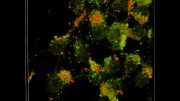

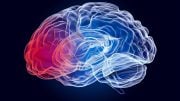
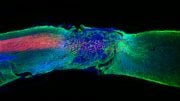


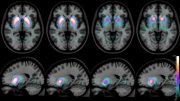
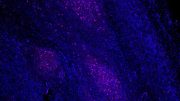
A human pheromone taken by mouth turns off Alzheimer’s disease. The pheromone (Nicholson, B. Does kissing aid human bonding by semiochemical addiction? British J. Dermatol. vol 111(5):623-7) is sensed via the nose and upper respiratory system microvillar “brush border” cells and the . The pheromone consists of more than 700 chemicals with pheromone-typical stereochemistry. 100 or so volatiles associated with healthy adult male facial skin surface lipid pheromone appear to be highly aversive so a respirator must be worn by staff.
the cranial nerve zero.